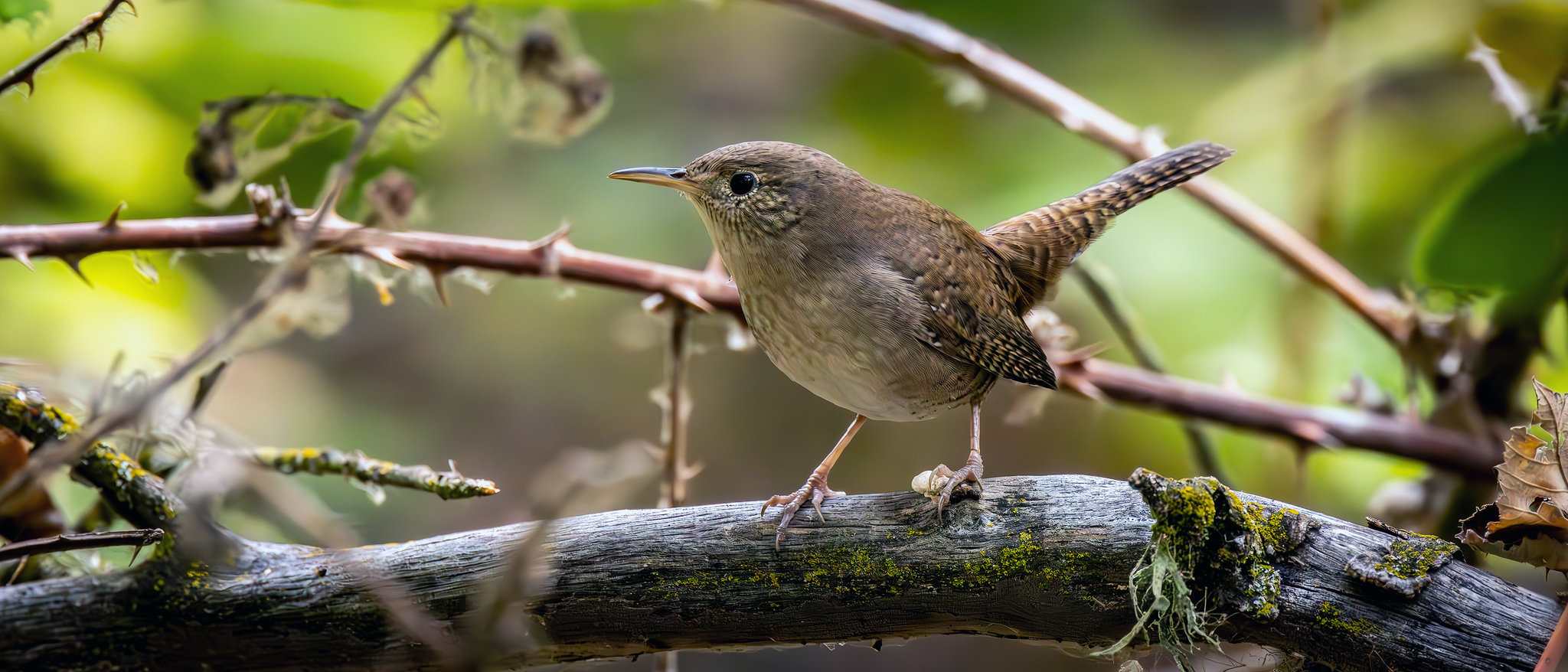A Very Noisy Northern House Wren – Reflections of the Natural World
One Moment in Nature is a reflection back in time to a moment of discovery as I explored the natural settings around me. Through the sharing of this moment, is my hope that readers will become motivated to learn more about our environment and its inhabitants, and become passionate advocates for conservation. One Moment in Nature is a Reflections of the Natural World Blog Post Series by Jim Gain

THE NORTHERN HOUSE WREN MOMENT
Jim Ross and I decided to go north a bit to visit the Mokelumne Day Use Area in San Joaquin County in hopes of finding some of the species observed by Jim Rowoth recently. In Stanislaus County we we were having a tough time finding the neotropic migrants on their way back to the tropics for the winter. We weren’t specifically looking for a wren, but while playing the call of a Black-throated Gray Warbler to get one I that I had heard to come in closer, the call of a Northern House Wren played in the background. I can’t possibly know what was communicated, but a nearby wren became extremely agitated by it. This tiny wren flitted back and forth between different berry brambles calling excitedly almost nonstop for a good 5 or 6 minutes.
ABOUT THE NORTHERN HOUSE WREN IN CENTRAL CALIFORNIA
In California’s Central Valley, the Northern House Wren (Troglodytes aedon) is a yearround resident, most commonly encountered during the breeding months from late spring through early fall. It favors semi-open habitats with scattered shrubs and trees, often near human dwellings, orchards, riparian corridors, and suburban gardens. Though not uniformly distributed across the valley floor, it is locally common in areas with sufficient nesting substrates—especially where cavities or nest boxes are available. Its presence tends to taper off in intensively farmed zones lacking woody vegetation, but it rebounds in urban edges and foothill margins.
The species is a limited short-distance migrant, with most individuals staying but with others departing the Central Valley floor by late autumn. During the breeding season, males arrive back first and energetically claim territories, often filling multiple cavities with twigs to entice females. Their bubbly, jumbled song is a familiar sound in backyards and parks, and they readily use artificial nest boxes. Nesting success is generally high in protected areas, though competition with other cavity nesters and predation by domestic cats and snakes can impact local populations.
From a conservation standpoint, the Northern House Wren is considered secure across its range, including California. It benefits from its adaptability to human-altered landscapes and its tolerance for a range of nesting sites. However, localized threats such as habitat fragmentation, pesticide use, and urban sprawl can reduce suitable breeding areas. Conservation models from the California Wildlife Habitat Relationships system show that predicted habitat suitability in the Central Valley is patchy, with higher quality zones near riparian woodlands and urban green spaces.
Ecologically, the Northern House Wren plays a role as an insectivore, helping control populations of beetles, caterpillars, and spiders. Its aggressive territorial behavior and tendency to destroy the eggs of other cavity nesters make it a surprisingly dominant presence despite its small size. In the Central Valley, its natural history is a story of resilience and opportunism—thriving where native vegetation persists and human structures offer nesting niches, yet still vulnerable to the shifting mosaic of land use and climate pressures.
A PHOTO GALLERY OF NORTHERN HOUSE WRENS
Most recent Blog Posts from the One Moment in Nature series.




